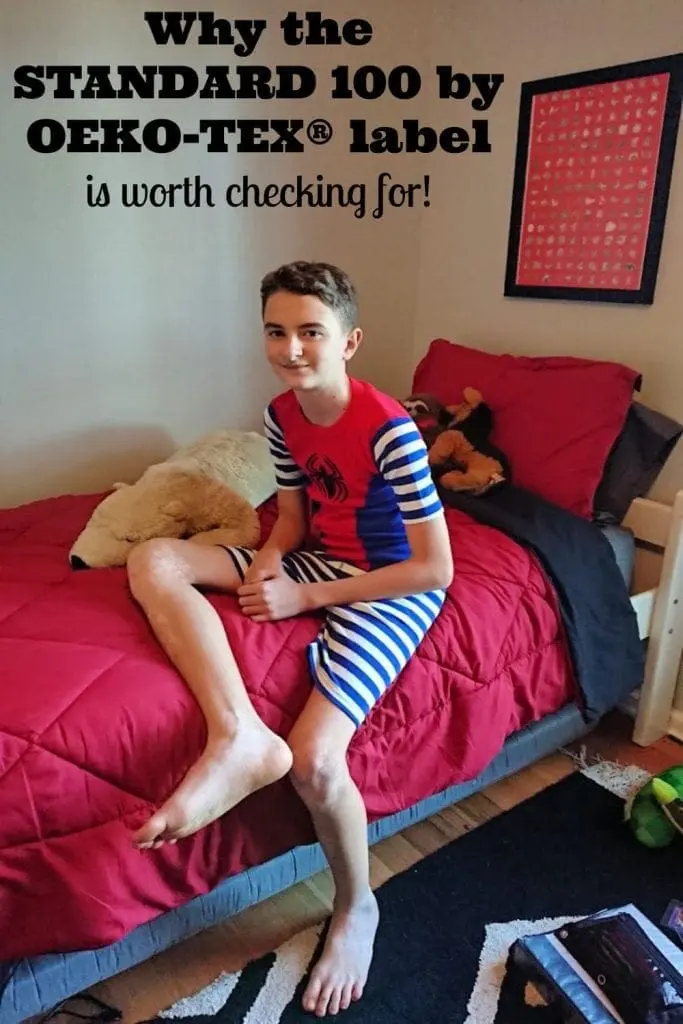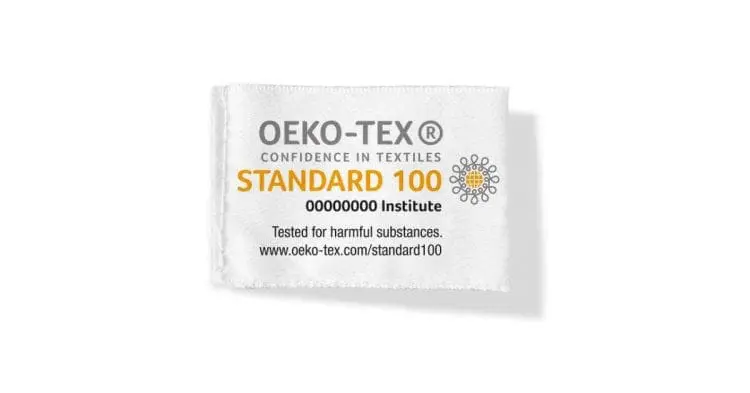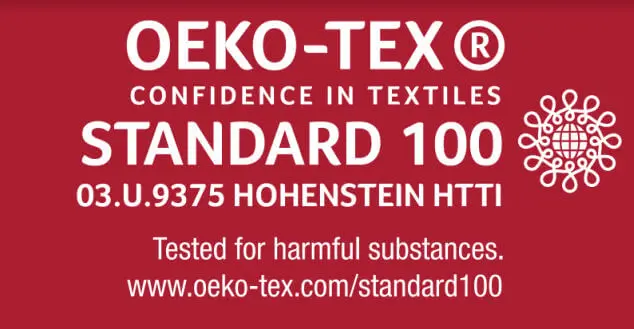You all know that I care tremendously about the safety and health of children and our environment. That’s why I love to share tips on everything from healthy eating for kids to how to get kids to exercise. As a parent, we all want our children to be healthy. However, sometimes the endless choices can make it difficult to select the best choices! That’s why I am happy to partner with OEKO-TEX® to help celebrate World Children’s Day. What is OEKO-TEX? They empower brands to be transparent in how they test for the safety of their textiles and clothing. The OEKO TEX label is a trustworthy way to spot safe clothing for babies and children. This kid clothing label means it has passed certification.

What is OEKO-TEX?
OEKO-TEX® is a worldwide association of 18 independent research and test institutes that create certifications and labels for textile products. These labels allow conscious shoppers to easily select clothing, footwear and home goods that have been tested for harmful substances. In other words, the OEKO-TEX label makes it easy to buy responsibly.

OEKO-TEX STANDARD 100
OEKO-TEX® offers several certifications with health and safety in mind. The STANDARD 100 by OEKO-TEX® certification provides confidence in textiles and clothing. It is one of the world’s best-known labels for textiles tested for harmful substances. The label certifies that every component of the product – from the fabric to the buttons – was rigorously tested for toxic chemicals. When you see this child clothing label, you can rest easy that they are safe for babies and children to wear.
Why OEKO-TEX Certified Is Especially Important For Children And Babies
In the STANDARD 100 by OEKO-TEX® tests they take into account numerous regulated and non-regulated substances, which may be harmful to human health. You may think, is this really necessary? Surprisingly, the answer is yes. Some manufacturing processes use harmful chemicals that are just not good for us. Our skin can absorb what is on our clothing through contact. Children are especially sensitive to toxins when compared to adults and therefore protecting them is even more important.
The STANDARD 100 by OEKO-TEX® label helps offer peace of mind when it comes to the health and safety of children. The OEKO-TEX® label is a helpful way to easily identify which brands are making their products safe according to their strict guidelines. With oeko-tex clothing, you can trust it was third party tested by independent oeko tex for the highest standards.

For example, the Hanna Andersson brand has almost all of their premium children’s clothing is STANDARD 100 by OEKO-TEX® certified. You will find the kids clothing label showing that they have achieved third-party certifications. I love knowing that I am getting a quality garment for my children. It is especially nice if your child has skin allergies or other sensitivities. My son has sensitive skin so the OEKO-TEX® label is even more important for him.

My son’s Hannah Andersson Pjs are STANDARD-100 by OEKO-TEX® certified.
Conclusion
The OEKO-TEX Standard 100 is a globally recognized certification that ensures textiles are tested for harmful substances, promoting consumer safety and sustainability. Products with this label undergo rigorous testing to meet strict criteria, ensuring they are free from chemicals that can harm health or the environment. This certification provides confidence to consumers that the textiles they use in everyday products, such as clothing, bedding, and furniture, are safe and responsibly produced. Ultimately, the OEKO-TEX Standard 100 represents a commitment to higher safety standards, contributing to the overall well-being of both individuals and the planet.
I love it when I see the OEKO-Tex children clothing label. Knowing that it has oeko tex certification means I know it is good quality product for the environment, workers, and wearers. I hope you found it useful to learn the answer to what is OEKO-TEX®. The labels make it easy to buy children’s clothing with confidence. Visit oeko-tex.com to learn more. Will you be on the lookout for oeko-tex standard 100 baby clothes from now on?
Related Posts:
